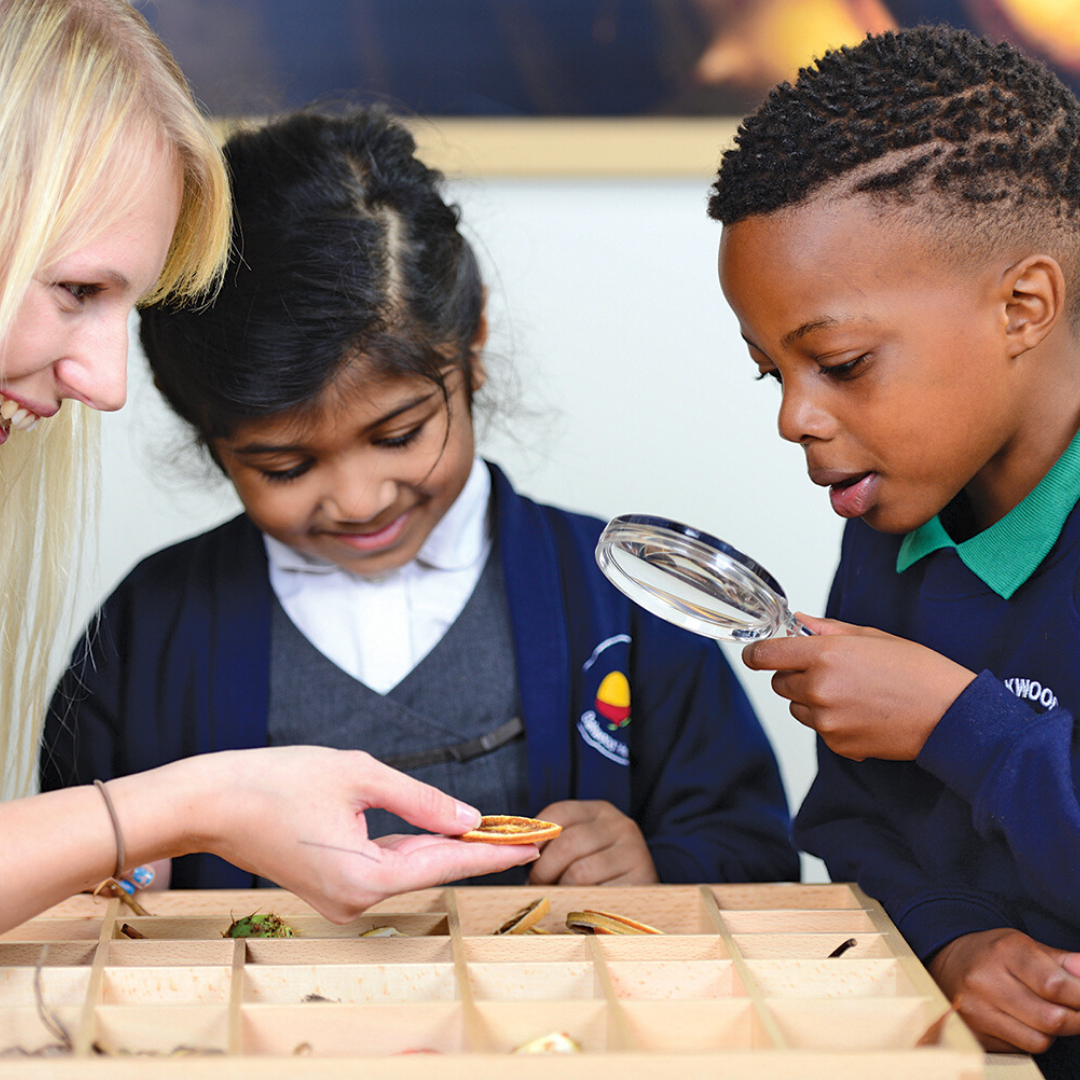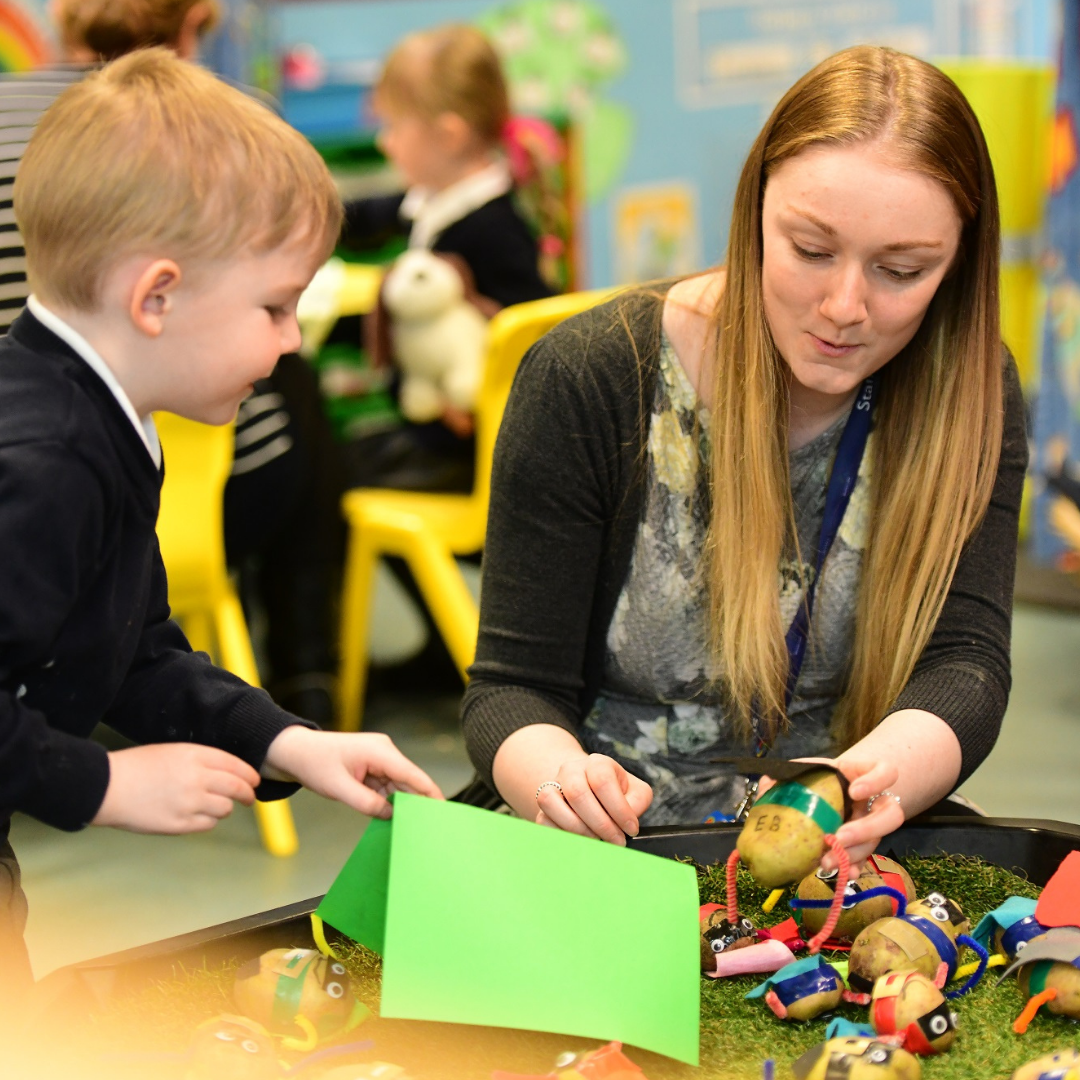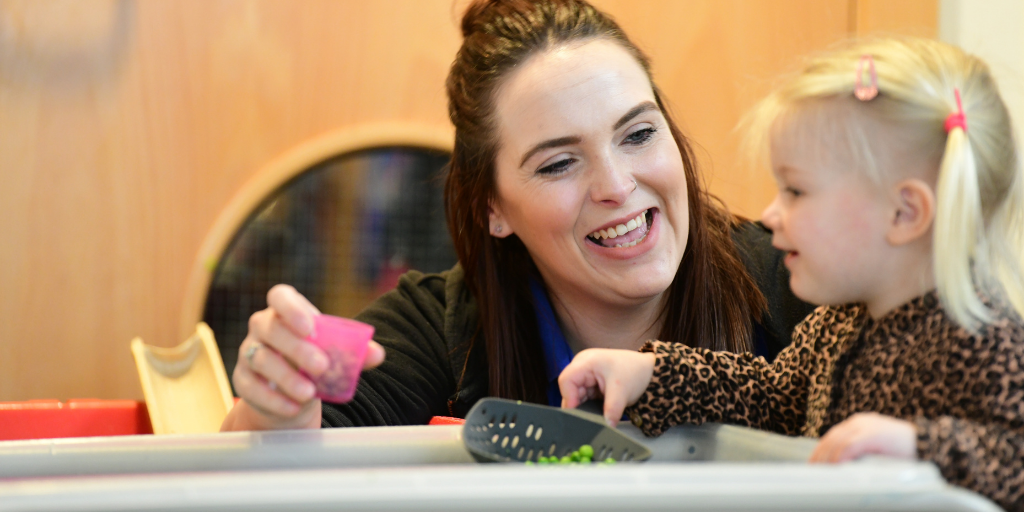Alongside the release of Ofsted’s new research review of the prime areas of learning, which aims to provide support for practitioners, we reflect upon our current cohort of children within our Early Years settings. We know that there is a concern from teachers and practitioners around the development of language and communication. Therefore, helping children to develop their communication and language has never been more important. So let’s unpick this key issue in some more depth. Talk has, for a long time been seen to be beneficial in the development of literacy skills.
This article is also available as a podcast:
“Reading and writing float on a sea of talk”
As James Britton stated in 1983, “Reading and writing float on a sea of talk”.
The benefits of talk go way beyond literacy though. Key research projects such as The Snowling Review in 2011 have highlighted the acquisition of language as a crucial element in learning and as a key predictor of later educational achievement. These reports have also pointed to the importance of the adult role in modelling the use of carefully chosen words and phrases in supporting language development.
A Report for the Education Endowment Foundation on Early Language Development in October 2017 found that:
“… there is evidence that the rate at which children develop language is sensitive to the amount of input they receive from the adults around them. The quality of input that children receive is likely to be more important than the quantity. “
“Putting words together may be a better predictor of later abilities than the number of words that a child uses.”
Of course there are many other gains too. Effective communication is also built on close, strong relationships. These relationships nurture a sense of value and security in young children and help to build the high levels of wellbeing that are also vital to the learning process. Yet classroom practice does not always reflect how much talk is valued. Showing that we do, or don’t value talk hinges on how we use our time within the classroom. Both taking turns in conversation and engaging in sustained shared thinking, require adults who are prepared and able to invest quality time each day in building positive relationships. For this to happen, adult time needs to be used wisely and we need to be very aware that teaching does not just happen on the carpet or at the group table.
What might this look like?
Building strong relationships from an early point in the school year is vital. Spending time alongside children within areas of provision to model how materials can be used, introduce key vocabulary and help children make connections with prior experiences, will provide a rich context for learning. In order to support children effectively, staff will need to use language and vocabulary consistently and appropriately. A crucial element of continuous provision planning is to identify the names and key vocabulary linked to resources in each area of provision. So, let’s consider this, do staff in your school or setting use the names of resources consistently and appropriately? Do all staff know the key vocabulary linked to each resource within the room?
A Language Rich Environment
Of course, focussing on the importance of language isn’t new. In 2012, the EYFS Guidance highlighted the importance of a “language rich environment” so that children could “develop their confidence and skills in expressing themselves, and to speak and listen in a variety of situations.” Yet what is meant by a language rich environment can cause issues. There is a key difference between a print rich environment and one rich in language. Settings which focus purely on displaying vast numbers of key words on a range of surfaces have potentially missed the point. Acquiring new words and their correct context is linked to meaningful experience and talk. Key words displayed on laminated labels above the water area are no substitute for effective adult interaction linked to the rich sensory experiences and investigations in the water. Which raises a question: why are children taken out of provision areas for speech and language interventions?
Effective Interactions
Interacting effectively with children requires real skill, sensitivity and awareness. Children will be very quick to move away from adults if they feel that their own purpose has been interrupted or sidelined by the adults working alongside them. Adults need to be aware of the importance of giving children their full attention, getting down to the children’s height and displaying open, trusting body language. Shared moments that happen in this context provide a rich opportunity for teaching and learning, and they also provide the adults with rich knowledge of the children and how they go about learning. Getting the right balance of written and recorded observations alongside effective interactions here is crucial. Adults whose main concern is the gathering of written observations and photographs will often miss vital opportunities to engage in valuable talk with children about their learning and understanding. The irony here is that vast amounts of recorded information can often indicate a surface level understanding of children’s development.
Sustained Shared Thinking
Of course, early years classrooms and outdoor areas are busy places and we can’t be everywhere at once. If we are going to prioritise talk and create a truly language rich environment, then we need to allow time for talk in a variety of contexts. The Highscope structure of plan, do and review, gives children the daily opportunity to talk through their ideas and actions and provides staff with meaningful opportunities to engage in conversations with the children. Of course, this requires an investment of time; time to talk, make plans, consider ideas and also time to share how things went and what we might do differently. Crucially, it is often through these periods of sustained shared thinking that children will ask questions that the adults don’t know the answers to. In terms of learning, these moments are like gold dust, a great levelling moment where adults and children are at the same point, wondering, thinking, questioning and exploring. This is talk and language at the heart of the learning process. As Julie Fisher puts it:
“In order to capitalize on the power of language to influence both thought and action, classroom experiences must encourage talk as a key process through which young children learn.”
So, some key questions to consider:
- Does your timetable reflect the importance of talk as a valuable part of the learning process?
Are your staff team skilled in interacting with children in a variety of contexts? - Does your Senior Leadership Team recognise the importance of talk as a key part of the teaching and learning process?
- Does your continuous provision planning identify opportunities within areas of provision for adults to model vocabulary consistently?
- In your school or setting, is the recording process a barrier to effective interaction with children?
The ability to interact sensitively and appropriately, supporting and extending learning is a complex process built on a deep understanding of how young children learn and our knowledge of each unique child.
Find Out More

Join us to understand how to create a climate for talk across your EYFS provision and explore practical ways to target children’s talk in the environment with our new course Strengthening Language Support in the EYFS

Central to effective Early Childhood Education is the skilful adult. You may also find our Let’s Explore Sustained Shared Thinking useful to improve the quality of your interactions and outcomes for all our children.

Consider how to skilfully and meaningfully shape continuous provision and provide enhancements which connect with children’s interests to help embed, extend learning and enrich language development with our Let’s Explore Effective Teaching in the EYFS webinar.

